March 13, 2024

By Jakob Örneberg
Salesforce vs Microsoft Dynamics.
In this blog post I will compare Microsoft Dynamics with the market leader in the field: Salesforce.

Why is this important?
- If you consult within Salesforce or Microsoft Dynamics, it’s crucial to understand the CRM market to best assist your customers.
- If you’re considering purchasing one of the platforms, you must know exactly what you’re buying (and paying for!).
Blog Part 1: Overview of the platforms
– History
– Product comparison
– Other parameters to compare
– User interface
– Conclusion
Blog Part 2: Price comparison
– Licensing
– Pricing
History
Salesforce was founded in 1999 by Marc Benioff, among others, as one of the first SaaS-companies in the world. The founder remains active in the company today. Its logotype, a blue cloud, symbolizes the pioneering cloud-based CRM. In contrast, Microsoft Dynamics was not founded as a standalone company; it has evolved as a product line within Microsoft. In 2016, Microsoft announced the launch of Dynamics 365, which unified ERP and CRM solutions into a single cloud-based platform.
Salesforce is the market leader in the field, holding 20-25% market share. Source: Salesforce, 2023

| Salesforce | Microsoft Dynamics | |
|---|---|---|
| Founded | 1999 | In 2006, Microsoft Business Solution became Dynamics CRM. In 2016, CRM and ERP were packaged under the name Dynamics 365. |
| Number of customers | ~150.000 | ~40.000 |
| Market share | 20-25% | 5-10% |
Product catalog
Salesforce and Dynamics 365 could be described as two parallel universes when it comes to their product catalogs. Both present their offerings in a circle, which reflects that their services are designed to cover all aspects. Salesforce 360 represent the degree of a circle, and Dynamics 365 represent the number of days in a year.
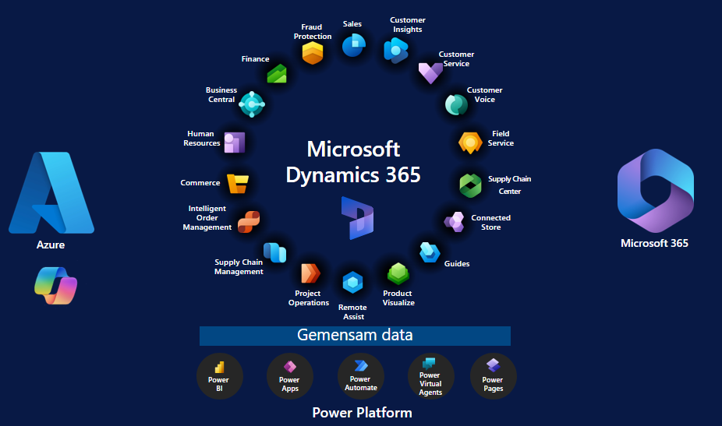

Salesforce presents its material in a more intuitive way, with more animals, more playfulness, and often more colors in its learning materials. A detail I’ve noticed in these product overviews is that Salesforce places the customer at the center, whereas Microsoft does not. Could this be a reason why Salesforce is the market leader (by far)? Does Salesforce customer-centric approach lead to more deals?
| Salesforce | Microsoft Dynamics | |
|---|---|---|
| Marketing | Marketing Cloud | Dynamics Customer Insight |
| Sales | Sales Cloud | Dynamics Sales |
| Customer Service | Service Cloud | Dynamics Customer Service |
| E-commerce | Commerce | Commerce |
| Field Service | Field Service (part of Service Cloud) | Dynamics Field Service |
| Project | – | Project Operations |
| ERP | – | Business Central and Finance Operations |
| Industry specific solution |
Several: finance, communications, consumer goods, government, healthcare, manufacturing, media, nonprofit, retail, net zero cloud |
Some: finance, healthcare, nonprofit, retail, sustainability |
| Analytics | Tableau | Power BI |
| Integration | Mulesoft | Azure
(api-management, functions, service bus, event grid, data factory, logic apps) |
Other parameters to compare
There is a lot more to compare between the systems.
| Salesforce | Microsoft Dynamics | |
|---|---|---|
| CDP | Genie & Salesforce Data Cloud | Dynamics Customer Insights |
| CPQ | Yes | No (through integration) |
| App store | Appexchange > 4000 CRM apps | AppSource > 1500 CRM apps |
| Host | Self managed, AWS, Google Cloud or Hyperforce (customer choice) | Microsoft Azure |
| Data center | Self managed in: USA, Germany, India, UK, Australia & Japan | USA, Belgium, Brazil, Canada, Chile, Mexico, Australia, China, India, Indonesia, Japan, Korea, Malaysia, New Zealand, Taiwan, Austria, Denmark, Finland, France, Germany, Greece, Italy, Norway, Poland, Spain, Sweden, Switzerland, United Kingdom, Africa, Israel, Qatar, United Arab Emirates, and Saudi Arabia. |
| Code language | Apex (Salesforce specific) & JS | C# & JS |
| On-prem | No | Yes (and hybrid) |
| Cloud |
Yes, always been. |
Yes |
| Release waves | Spring, summer & winter | Release wave 1 and Release wave 2 |
Explore more about Microsoft Datacenters: Microsoft Datacenters.
More about Salesforce Datacenters: Salesforce Datacenters.
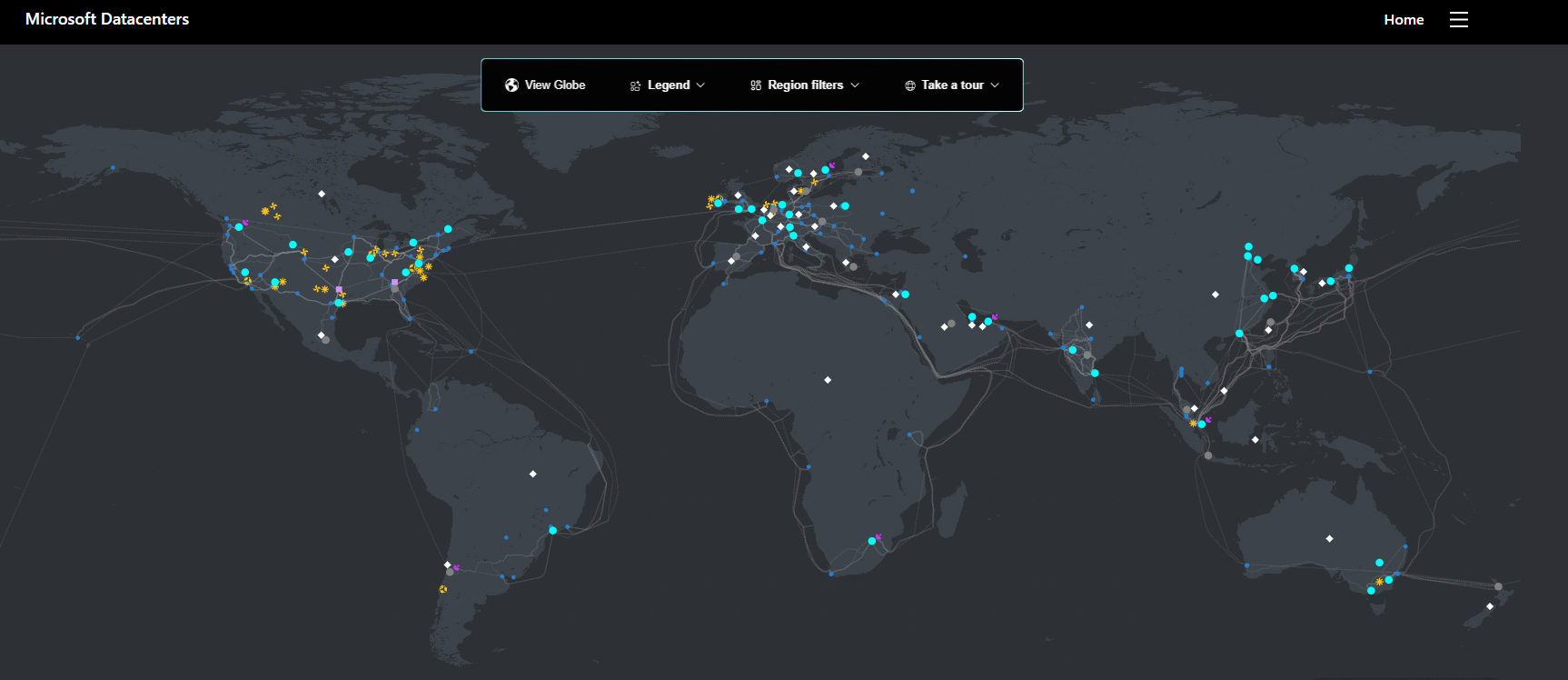
Education and learning
One important parameter to compare is the way Salesforce and Microsoft educate the users and developers. Both platforms offer solid education through Salesforce Trailhead and Microsoft Learn. You can choose from many different learning modules, covering both technical and business-related topics. Again, Salesforce differentiates itself slightly with its colorful design and somewhat more “easy-to-read” texts.
I have earned certificates on both platforms, so I have spent many hours reading…
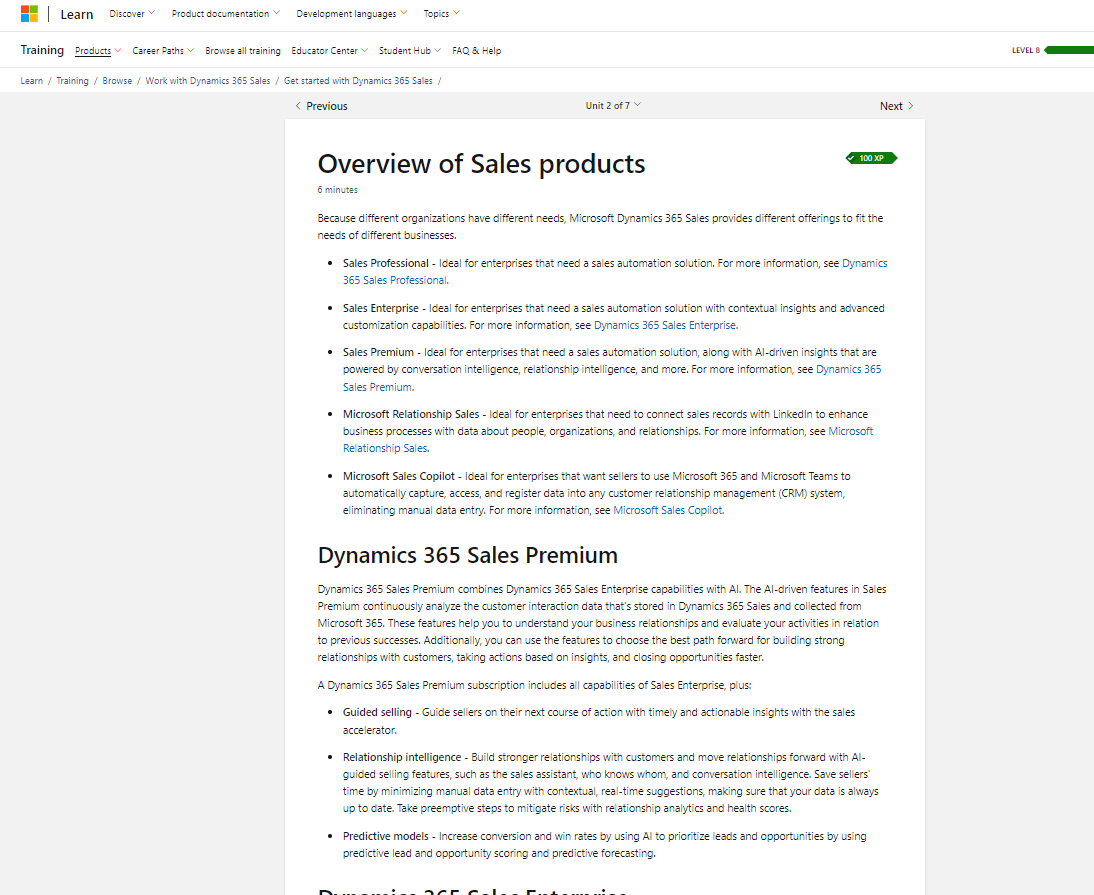
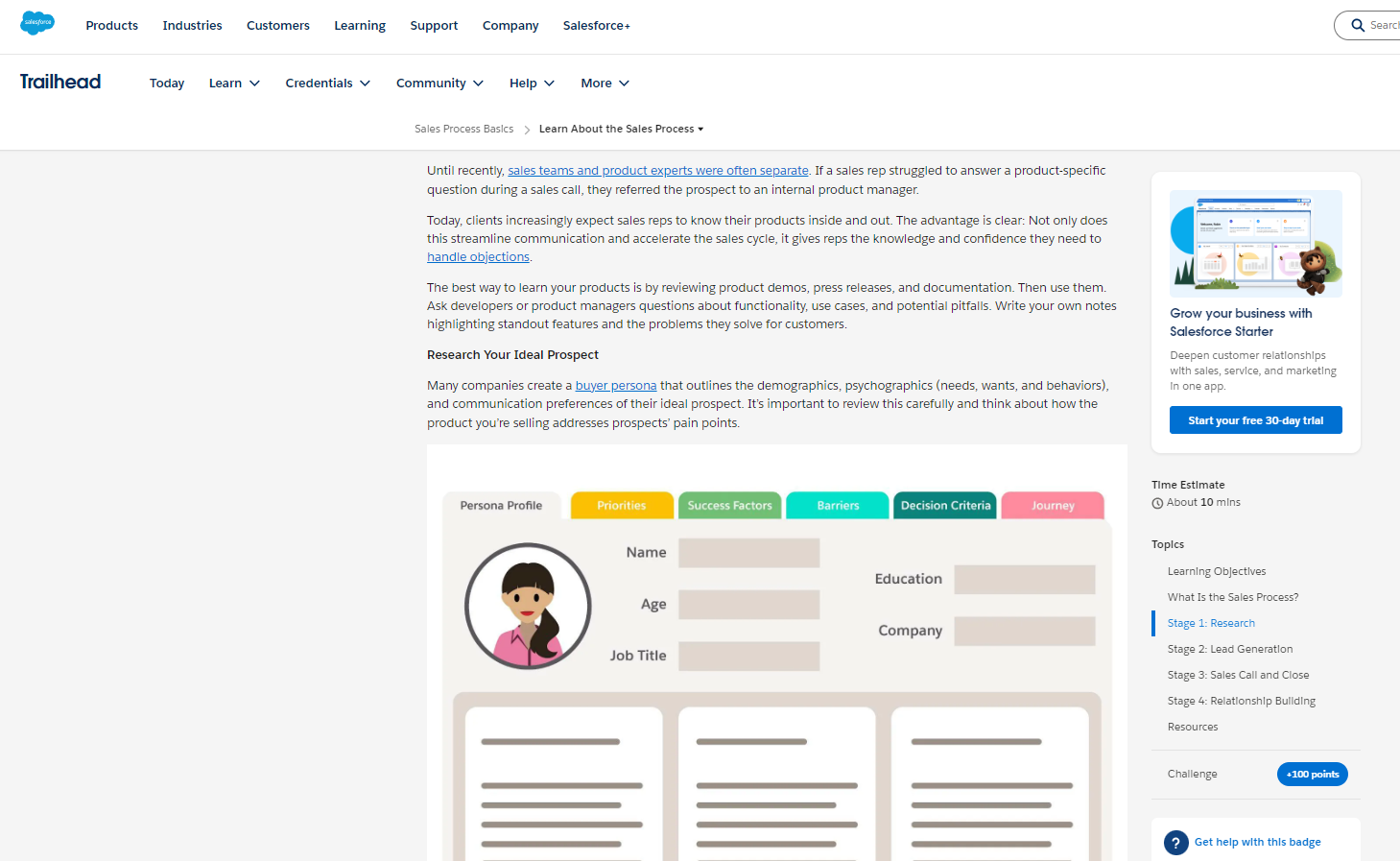
From a learning perspective, I appreciate the functionality in Trailhead that allows for the easy creation of an environment to use as a playground. This process is far more complicated in the world of Microsoft.

User Interface
Deciding which UI is the most beautiful and user-friendly is almost impossible. Do like an apple or a pear the most? As mentioned, Salesforce uses more colors and incorporates more gamification effects. On the other hand, if you prefer Microsoft products like Outlook, SharePoint or Teams, you will probably find the look and feel of Dynamics more to your liking.
Account page

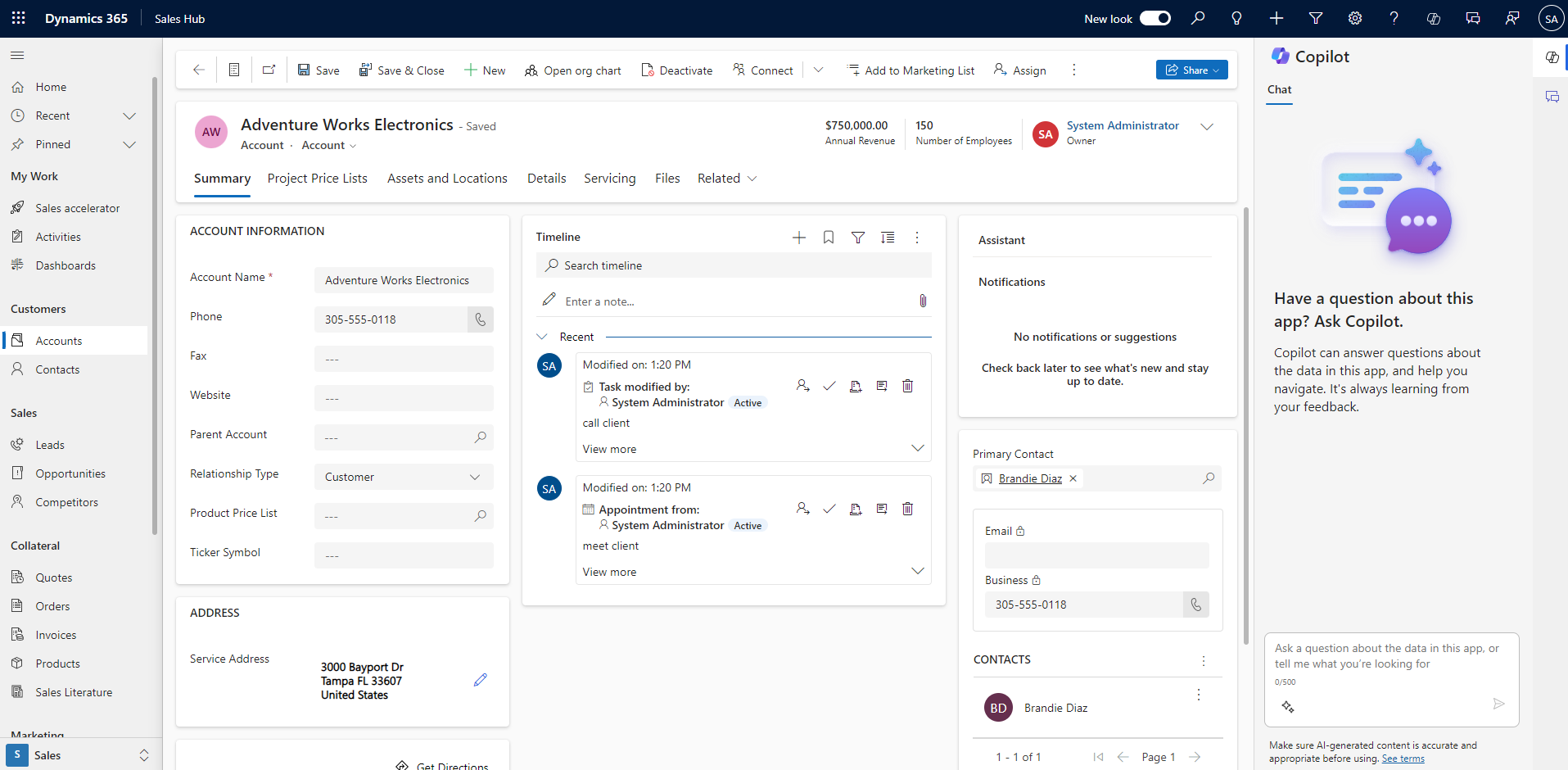
Opportunity page

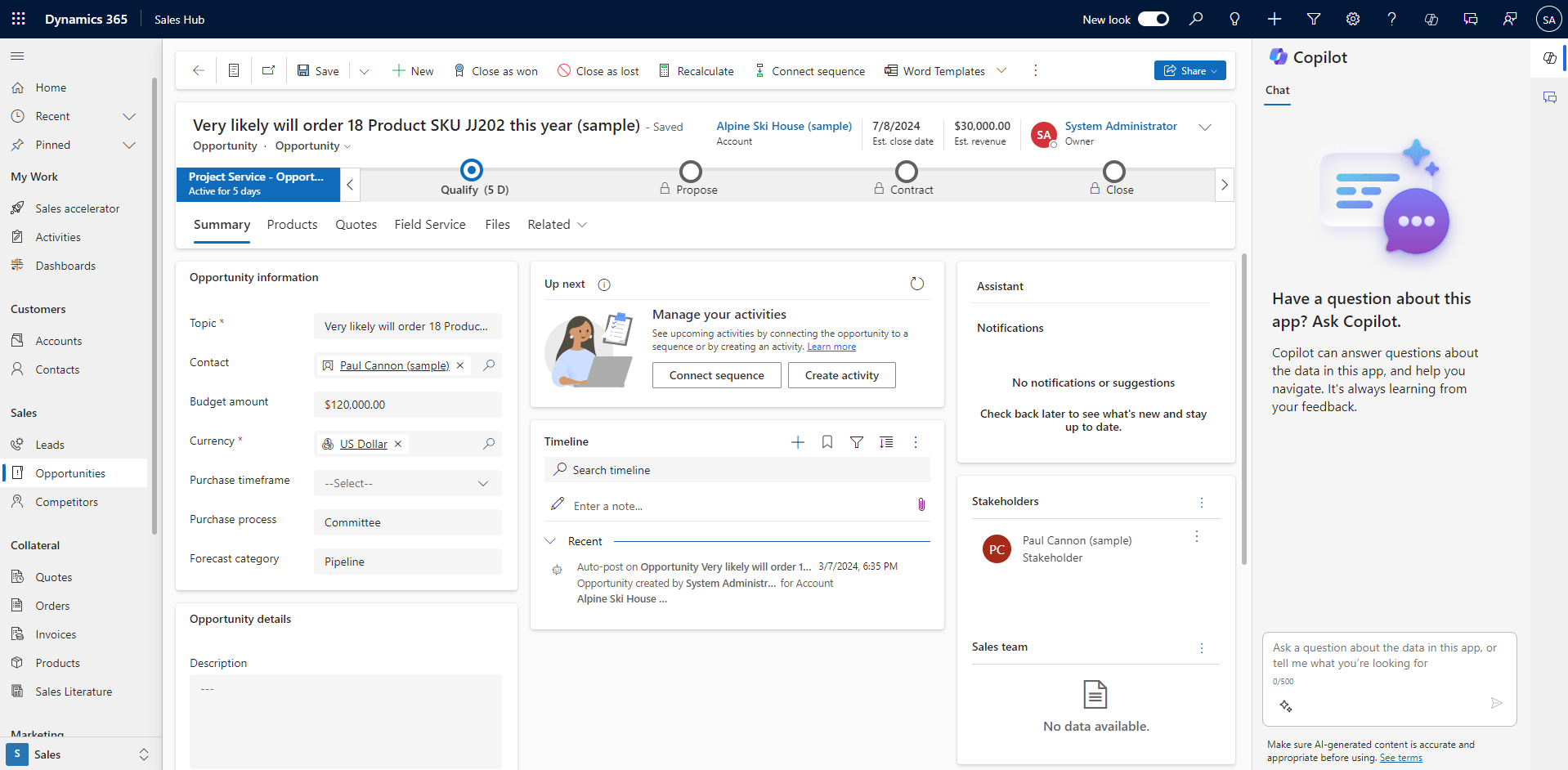
Conclusion
Are you choosing between the two platforms? Here are some questions to consider:
- What does your organization’s IT system look like today? Which products exist?
- What competencies do you have in-house?
- What are your needs?
- What is your budget?
Which to choose?
Both platforms are similar in terms of functionality, customization, scalability, mobility, support and security. I have tried to summarize some parameters where the two platforms differ.
| Salesforce | Microsoft Dynamics | |
|---|---|---|
| Pros |
|
|
| Price and licensing | Next blog post | Next blog post |


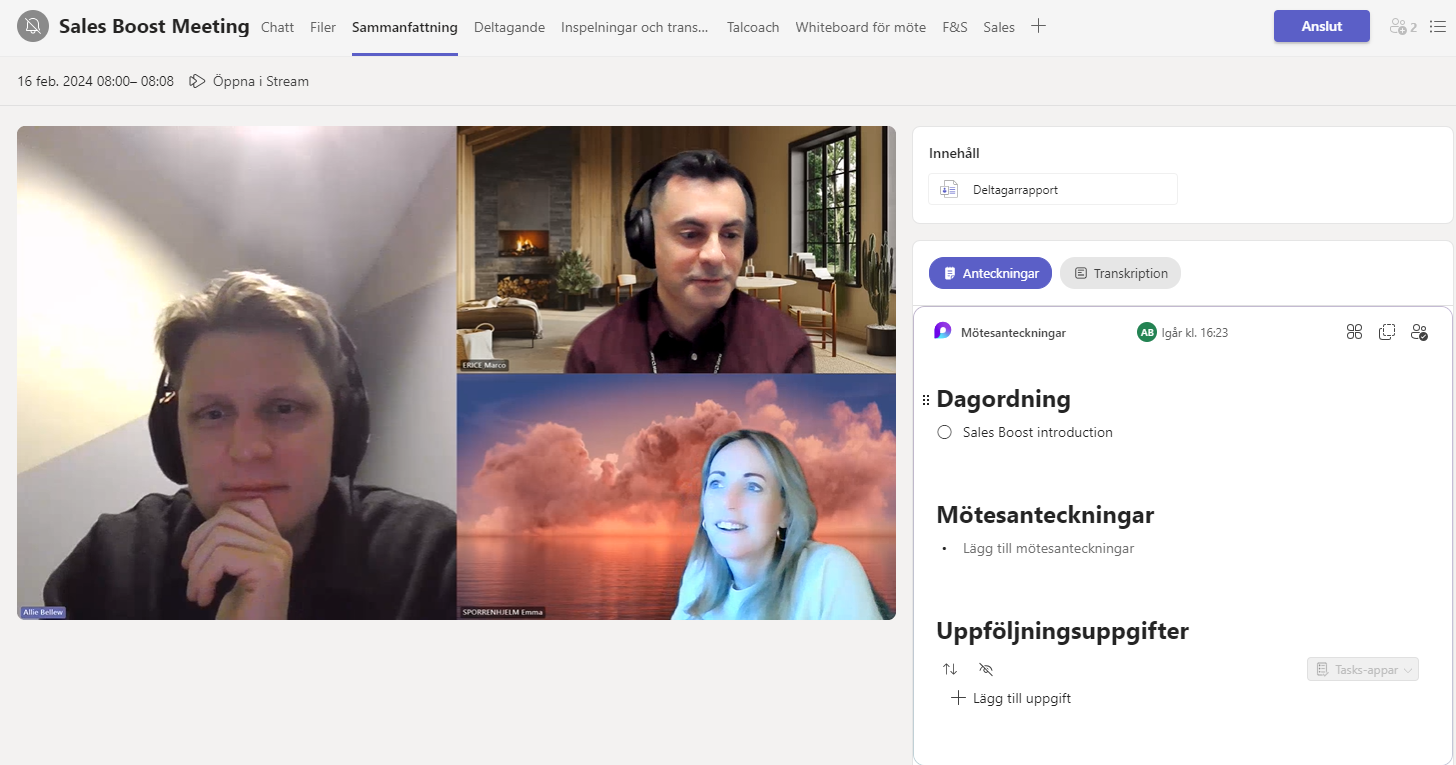

Like your post! I think, considering platforms, one should (also) ask themselves what the result or impact should be, what does it need to solve for, why and for whom?
[…] I would recommend to read the first blog part: Salesforce vs Microsoft Dynamics. […]